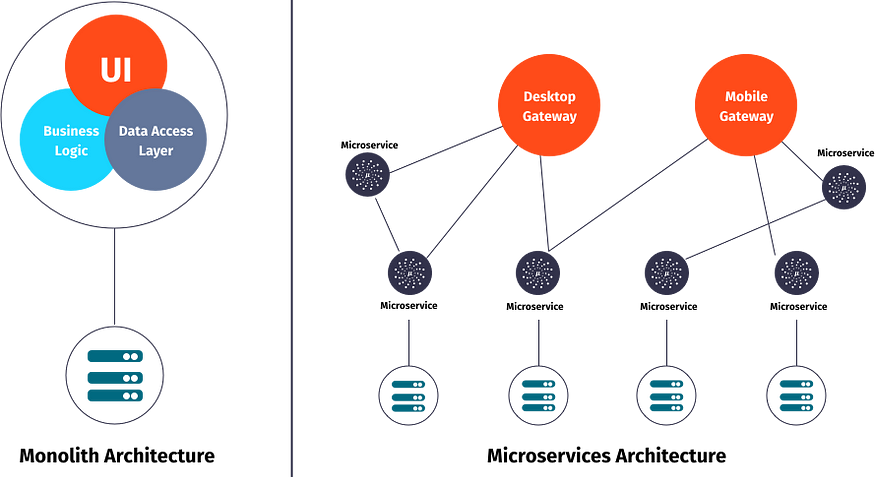Java is a versatile and adaptive programming language that seamlessly integrates with multiple cloud platforms. Software developers constantly develop, deploy, and manage a variety of applications, and cloud-native Java technologies offer them countless opportunities to bring their innovative ideas to life and accelerate time to market by launching them faster.
The cloud computing model gives businesses a distributed architecture that reduces complexity and stabilizes application performance. Cloud-native Java technology can adapt to changing trends and is growing in popularity.
This guide will discuss how to leverage cloud-native technology with Java and everything you need to know about it.

What is Cloud-Native Java?
Cloud-native Java application development focuses more on developing Java applications for the cloud rather than making apps cloud-geared after building or deploying them.
JDK 9 introduced compact strings, which improved memory optimization. Container limits awareness was backported to JDK 8, and the metaspace for collecting HotSpot class metadata had its elasticity enhanced. Java developers will enjoy a seamless migration experience to the cloud thanks to the latest advancements and fixes in current releases.

Critical Components of Cloud-Native Java Applications
Cloud-native technology integrations with Java applications comprise the following components:
- Microservices—Microservices are small, lightweight, and independent components that communicate with each other via APIs and extend an application's existing functionalities and performance. They offer a high degree of customization and flexibility and operate on their own business logic. Microservices are an excellent choice for building engaging and clean user interfaces and can be deployed, scaled, upgraded, or restarted, as needed.
- Containers—Containers are becoming a fundamental part of cloud-native Java development. They help developers achieve portability and can isolate applications from runtime environments. Containers also add granularity to application scalability and improve physical machines' CPU and memory utilization.
- CI/CD—CI/CD is the latest practice in Agile methodology, where developers commit code changes at regular intervals. CI/CD can fully or partially automate development workflows. To a certain extent, developers can create deployment-ready artifacts and automatically make code revisions by preceding manual reviews. Popular CI/CD tools for cloud-native Java development are Jenkins, Travis CI, and TeamCity.
- DevOps – DevOps-driven cloud-native software development streamlines delivery pipelines and makes applications more reliable, scalable, and faster. Enterprises use various cloud-native tools and technologies to enhance collaboration, monitor, and optimize performance.
How to Build Cloud-Native Apps with Java?
Java developers can build cloud-native apps by using Google Cloud Functions. It supports serverless computing and provides a simple API to process data and respond to various events. There are several serverless architectures that Java developers can leverage to provide cloud-native app development services to clients.
AWS Lambda and Azure Functions are two of the most popular cloud-native services trending, helping manage and deploy scalable solutions. Popular microservices frameworks that are becoming a mainstay in cloud-native development in Java are Spring Boot, Quarkus, Vert.x, and Micronaut.
Cloud-Native Security: Quarkus and Micronaut Best Practices
Quarkus is a lightweight framework that leaves a low memory footprint. It facilitates fast startup times and is designed to improve development productivity. Micronaut performs similarly on the efficiency scale but has a larger and more active community.
Quarkus leaves a low memory footprint and is ideal for fast startup times for Java applications. Developers should ask questions in the community forums for instant responses and get swift resolutions to their queries when using the framework.
Micronaut provides out-of-the-box support for many third-party frameworks like Kafka, S3, rabbitmq, etc.
Below are some of the best Quarkus and Micronaut practices when it comes to building cloud-native applications with Java:
- Developers can use Dev Services with databases to automatically run containers during JUnit tests. The Quarks dev command enables dev mode, and its live reload feature is very useful.
- You can implement a data layer to your code using the Quarkus Panache ORM. You can add custom find methods and define repository and resource classes with REST endpoints. Quarkus applications can be easily deployed to Kubernetes clusters without creating YAML files.
- To map secrets, use properties, and to enable health checks in the source code, apply the quarks-kubernetes module. You can also enable automatic deployments by setting quarkus.kubernetes.deploy to true in your code and even change the default deployment targets from Kubernetes to OpenShift.
- You can access the Dev UI console through http://localhost:8080/q/dev and include more modules there. Using the graphical UI, you can configure settings and deploy Java apps. Quarkus also supports continuous testing and delivers instant feedback on code changes. You must include the Quarkus Test module and the REST Assured library in your code for this. All test classes must be annotated with @QuarkusTest.
- Developers should use Micronaut’s native support for service discovery, authentication, distributed configuration, and client load-balancing. Inversion of control (IoC), aspect-oriented programming (AOP) techniques, configuration and configuration sharing, HTTP routing, and proxies can help build modular components.
- Micronaut uses annotate processors to integrate directly with Java compilers and supports the Reactive streams standard. Developers should test and deploy serverless functions with it, including different cloud computing platforms and providers like Google Cloud Functions, AWS Lambda, and Azure Functions.
- Micronaut makes it easy to create scalable microservices for Java applications. Java developers should use its seamless testing capabilities and robust offerings such as compile-time dependency injections, code samples, and extensive documentation.
- Quarkus's GraalVM's native image compilation technology can convert Java apps into cloud-native code and leverage SubstrateVM for translation. Its other features, such as classpath trimming and build-time configuration enhancements, should be utilized to streamline development efficiency and reduce the sizes of cloud-native applications.

Best Practices for Cloud-Native Application Development Using Java
Gartner estimates that over 85% of organizations will adopt cloud-native application development using Java by 2025. Cloud-native application development is transformative and delivers software in the best ways possible. Here are some of the best practices:
1. Encourage Product Ownership
Adopt the product ownership mindset and encourage your Java developers to make decisions regarding feature prioritization, deployment strategies, and choosing technology stacks. Development autonomy is essential for fostering innovation and empowering employees can increase their chances of success.
It also allows you to customize products based on customer feedback, changing market demands, and other requirements.
2. Use Java Microservices
Java microservices can fine-tune your cloud-native apps' speed, effectiveness, and performance. Their resource allocation features provide added flexibility, and microservices are known to improve application resilience. If one component fails, the entire system doesn't stop working, and teams can ensure business continuity.
3.Leverage Lightweight Containers
Java containers can be quickly started or stopped for cloud-native development. They are ideal for scaling workloads, changing traffic patterns, and ensuring the optimal utilization of resources. You can set specified memory limits for them and configure CPU usage. Java containers provide isolation capabilities that improve the stability and predictability of cloud-native applications and their functions.
4. Choose the Right Technology Stacks
Cloud app development uses different programming languages, frameworks, and tech stacks to ensure operational flexibility and post-deployment changes. The type of tech stack teams must use will depend heavily on business requirements. Some tools are great for data processing, while others are excellent for building microservices or improving development productivity.
Teams should be open to using various tools and combining them to implement new features in applications. They must continuously evaluate the latest tech stacks to ensure they align with changing requirements and industry trends and streamline cloud-native development.
5. Release Pipeline Automation
Developers are encouraged to take advantage of continuous integration as it makes code releases much higher quality and faster. Continuous integration (CI) and release pipeline automation are excellent practices for building cloud-native services.
Multiple developers can commit various changes across shared repositories, and these code changes are automatically integrated. Some key features include:
- Instant code quality feedback
- Automated unit, integration, and end-to-end testing
- Cloud-native application development and deployment across multi-cloud environments
- Possibility to rollback changes if any issues are detected during production
6. Go Serverless
Going serverless for cloud-native app development lets developers not worry about server management. It eliminates unnecessary overheads, and they pay for only the resources they use.
Serverless computing adds application flexibility by allowing organizations to scale up or down cloud-native services. Applications don't require manual intervention, can handle different levels of traffic, and ensure continuous compliance.
7. Implement IaC
Implementing IaC will help organizations achieve better infrastructure visibility and allow them to make efficient changes. IaC encourages collaboration among DevOps team members and makes it convenient to create new instances instead of modifying existing ones. It improves application predictability and stability, and all code changes can seamlessly be integrated across CI/CD pipelines and source control repositories.
8. Factor Observability
Code observability is another criterion to implement when following the best cloud-native Java development practices.
Observability includes collecting data logs, diagnosing performance issues, and detecting anomalies. It analyzes the root causes of issues and extracts data from multiple sources, such as traces, user interactions, and other metrics. DevSecOps teams should make security testing an integral part of the process and ensure uninterrupted operations throughout the custom software development lifecycle. They should also create appropriate incident response plans, define roles, and assign responsibilities based on insights derived from observations.
9. Apply Service Meshes
Employing service meshes can optimize communications and abstract interaction challenges.
Service meshes can improve fault tolerance and offer features like distributing incoming requests, load balancing, and improving the observability of cloud-native Java applications.
Conclusion
Cloud-native application development with Java will enhance performance outcomes, scalability, and flexibility, making maintenance much easier post-deployment. In microservices architectures, individual services are resilient, and isolation can minimize the impacts of security incidents.
Cloud-native Java applications are more responsive and available and ensure minimal downtime. They lead to significant cost savings and can deliver custom services to enterprises. These cloud-native practices will change how you approach Java software development and set you up for future success.
If you want to hire Java developers for your next project, contact Clarion Technologies.

Author




